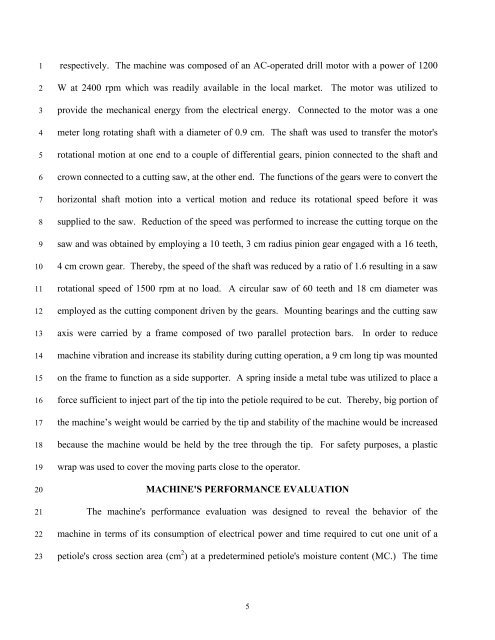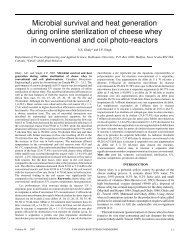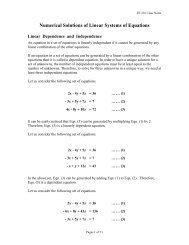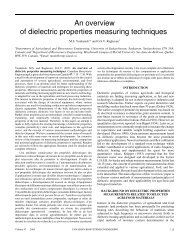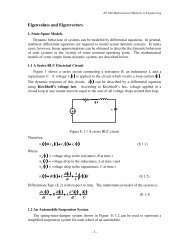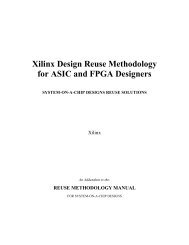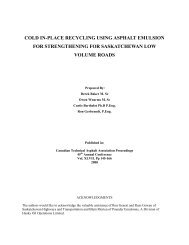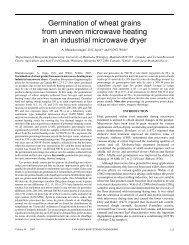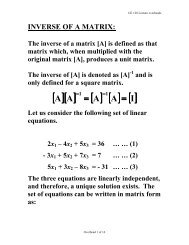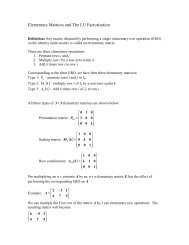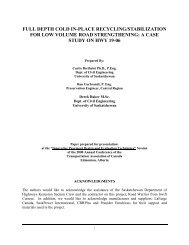development and testing of a portable palm tree pruning machine
development and testing of a portable palm tree pruning machine
development and testing of a portable palm tree pruning machine
Create successful ePaper yourself
Turn your PDF publications into a flip-book with our unique Google optimized e-Paper software.
1<br />
2<br />
3<br />
4<br />
5<br />
6<br />
7<br />
8<br />
9<br />
10<br />
11<br />
12<br />
13<br />
14<br />
15<br />
16<br />
17<br />
18<br />
19<br />
20<br />
21<br />
22<br />
23<br />
respectively. The <strong>machine</strong> was composed <strong>of</strong> an AC-operated drill motor with a power <strong>of</strong> 1200<br />
W at 2400 rpm which was readily available in the local market. The motor was utilized to<br />
provide the mechanical energy from the electrical energy. Connected to the motor was a one<br />
meter long rotating shaft with a diameter <strong>of</strong> 0.9 cm. The shaft was used to transfer the motor's<br />
rotational motion at one end to a couple <strong>of</strong> differential gears, pinion connected to the shaft <strong>and</strong><br />
crown connected to a cutting saw, at the other end. The functions <strong>of</strong> the gears were to convert the<br />
horizontal shaft motion into a vertical motion <strong>and</strong> reduce its rotational speed before it was<br />
supplied to the saw. Reduction <strong>of</strong> the speed was performed to increase the cutting torque on the<br />
saw <strong>and</strong> was obtained by employing a 10 teeth, 3 cm radius pinion gear engaged with a 16 teeth,<br />
4 cm crown gear. Thereby, the speed <strong>of</strong> the shaft was reduced by a ratio <strong>of</strong> 1.6 resulting in a saw<br />
rotational speed <strong>of</strong> 1500 rpm at no load. A circular saw <strong>of</strong> 60 teeth <strong>and</strong> 18 cm diameter was<br />
employed as the cutting component driven by the gears. Mounting bearings <strong>and</strong> the cutting saw<br />
axis were carried by a frame composed <strong>of</strong> two parallel protection bars. In order to reduce<br />
<strong>machine</strong> vibration <strong>and</strong> increase its stability during cutting operation, a 9 cm long tip was mounted<br />
on the frame to function as a side supporter. A spring inside a metal tube was utilized to place a<br />
force sufficient to inject part <strong>of</strong> the tip into the petiole required to be cut. Thereby, big portion <strong>of</strong><br />
the <strong>machine</strong>’s weight would be carried by the tip <strong>and</strong> stability <strong>of</strong> the <strong>machine</strong> would be increased<br />
because the <strong>machine</strong> would be held by the <strong>tree</strong> through the tip. For safety purposes, a plastic<br />
wrap was used to cover the moving parts close to the operator.<br />
MACHINE'S PERFORMANCE EVALUATION<br />
The <strong>machine</strong>'s performance evaluation was designed to reveal the behavior <strong>of</strong> the<br />
<strong>machine</strong> in terms <strong>of</strong> its consumption <strong>of</strong> electrical power <strong>and</strong> time required to cut one unit <strong>of</strong> a<br />
petiole's cross section area (cm 2 ) at a predetermined petiole's moisture content (MC.) The time<br />
5


